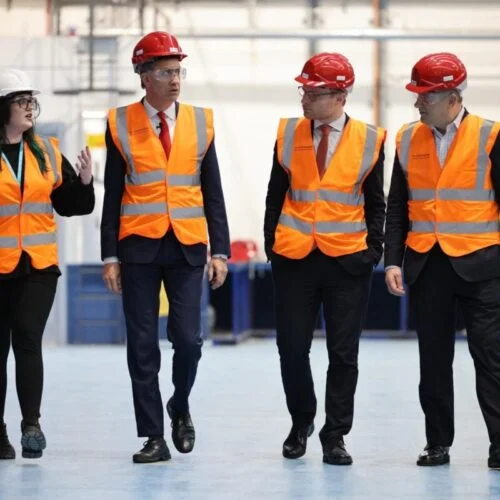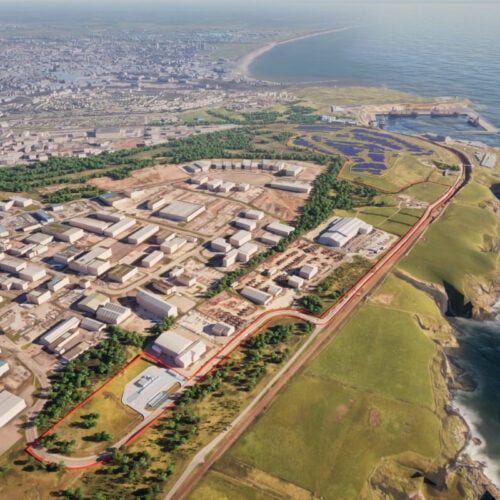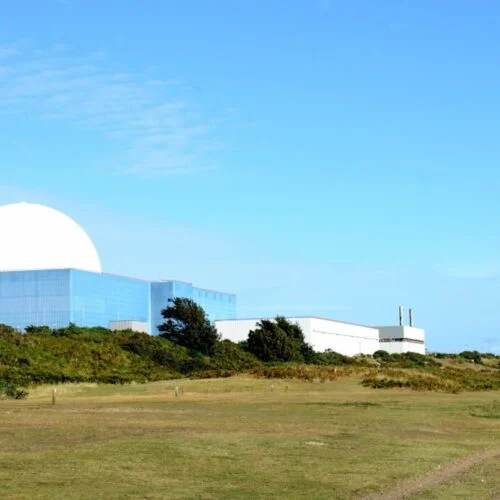On 1-2 July 2025 at Leonardo Royal Hotel, Tower Bridge in London, our publisher, Solar Media, will hold its Green Hydrogen Summit UK 2025.
The Summit will be co-located with the UK Solar Summit, and Wind Power Finance & Investment Summit as part of the Clean Power Summits, and aims to provide a comprehensive platform to explore cutting-edge solutions across solar, wind and green hydrogen sectors.
Ahead of the event, Current± speaks with Boris Davis, business lead UK at Lhyfe, a French hydrogen producer, who will be speaking on day two of the event in the fireside chat Driving the Hydrogen Mobility Forward.
What hydrogen projects are you developing, and what breakthroughs are making these projects particularly exciting for the UK market?
Lhyfe is a European leader in the production and supply of green hydrogen, founded in 2017 with a mission to drive the energy transition. We produce hydrogen via water electrolysis powered exclusively by renewable electricity, namely wind and solar. This process emits up to ten times less CO₂ than conventional (grey) hydrogen and is designed to decarbonise hard-to-abate sectors such as heavy industry, transport, and logistics.
Lhyfe has operations in 12 countries. Our headquarters are in Nantes, France, with subsidiaries in Germany, Denmark, the Netherlands, Sweden, Spain, the UK, and Canada, and offices in Belgium, Finland, Norway, and Portugal. In fact, if you draw a line between Portugal and Finland, we have projects in most of those countries. Notably, we launched the world’s first industrial-scale green hydrogen plant connected directly to a wind farm and the first offshore production pilot platform.
In the UK, we’re actively developing two green hydrogen projects to support national net zero goals and build domestic energy resilience. One of those is our proposed 20MW green hydrogen production site in Wallsend, North East England.
To be powered by renewable energy, this facility has recently secured planning permission and was recently shortlisted for the government’s Hydrogen Allocation Round 2 (HAR2). Its aim is to supply industrial users and fuel cell transport fleets supporting regional decarbonisation which will, in turn, create new jobs in the area.
What makes our model particularly exciting is our ability to deploy modular, scalable production sites close to demand, reducing the need for extensive hydrogen transport infrastructure. This localised, flexible approach enhances cost-efficiency and enables faster impact.
How are your projects addressing specific challenges in the UK’s energy transition, and what tangible benefits could attendees gain from connecting with you at the summit?
Lhyfe’s core mission is to help build the UK’s hydrogen economy by accelerating green hydrogen deployment and turning policy ambition into real infrastructure. Our projects target major challenges in the UK energy transition – particularly decarbonising heavy industry and transport and enabling grid flexibility and long-term renewable energy storage.
What sets us apart is our ability to develop modular production sites at scale, de-risk projects with real-world experience, and support end users across the entire lifecycle from feasibility to delivery.
We are excited to be taking part in the summit, exploring green hydrogen opportunities with attendees across transport and industrial sectors. We would love to talk to others about our operational plants in Europe and especially those with an interest in hydrogen here in the UK. Most importantly, we’re keen to connect, collaborate, and share our insights, so come and have a chat!
What does the UK need to do to stay competitive in the global hydrogen economy?
The UK has made strong early commitments, with a clear hydrogen strategy and introduction of support schemes like HAR. However, staying globally competitive requires swift action to turn strategy into scaled delivery.
We need continued investment in infrastructure, especially storage, pipelines, port hubs, refuelling stations and a faster, clearer regulatory pathway. Policy mechanisms must offer certainty and simplicity to both producers and offtakers. Importantly, green hydrogen must be supported at scale, with concrete funding decisions and long-term visibility to attract investment.
The hydrogen economy presents a once-in-a-generation opportunity to reshape the UK’s industrial base, reduce dependence on imported fuels, and enhance energy security. Countries across Europe are already moving fast. We think that now is the time for the UK to lead, not follow.
How effective has the Hydrogen Allocation Round process been in supporting early projects?
We were proud to have two Lhyfe projects shortlisted in the UK’s Hydrogen Allocation Round 2. This milestone marks important progress in our UK development and reflects confidence in our modular approach and European delivery track record.
The HAR process is a valuable framework, offering structure and clarity that help de-risk early-stage projects and give investors greater confidence. It’s a positive signal of the UK’s commitment to a low-carbon hydrogen economy.
That said, the effectiveness of HAR depends on how quickly and consistently projects can progress. We’re optimistic that as the process evolves, it will become faster, more transparent, and more predictable, which are crucial factors in unlocking large-scale investment.
How can the UK improve coordination between hydrogen production, storage, and transport infrastructure?
The UK can improve coordination by adopting a more integrated, regional planning approach – connecting production, storage, and transport infrastructure around key industrial zones, transport corridors, and ports. National frameworks should be paired with local delivery bodies and targeted funding to align timelines, reduce duplication, and ensure infrastructure is built where it’s most needed and subsidy support where it can be most effective.
What role can hydrogen play in the decarbonisation of legacy industrial clusters (e.g. Teesside, Humberside)?
While we’re not directly involved in the legacy industrial clusters, we fully recognise their strategic importance in the UK’s hydrogen roadmap.
At Lhyfe, our focus is on bringing the same decarbonisation benefits to other key industrial regions, such as Wallsend in the North East, through independently developed, renewable-powered hydrogen production. Our distributed model allows us to locate production close to demand, helping more parts of the UK access clean hydrogen and build resilience beyond the traditional clusters.
What more is needed from the UK government to unlock bankable offtake agreements?
Unlocking bankable offtake agreements requires greater price certainty and demand signals. Industrial users and transport operators need to know that switching to green hydrogen won’t expose them to unpredictable price swings compared to fossil-based alternatives.
Mechanisms like Contracts for Difference (CfDs) are critical, as they bridge the cost gap and provide fixed pricing over time. However, these need to be implemented quickly, consistently, and in ways that are workable for an emerging hydrogen market.
At Lhyfe, we’ve successfully delivered hydrogen projects across Europe. Bringing this experience to the UK depends on having stable, transparent policy tools that help both producers and offtakers commit with confidence.
What financing models are proving most effective for UK hydrogen projects?
In the UK, subsidy mechanisms like HAR are supported by long-term Contracts for Difference, which provide essential revenue stability. HAR2 in particular, offers 15-year price support that makes capital-intensive hydrogen production projects financially viable.
This model de-risks investment in infrastructure like electrolysers and renewable integration, while also providing affordability and predictability for industrial offtakers. These dual benefits are key to attracting investment, scaling up production, and creating a stable, competitive market for green hydrogen in line with the UK’s climate goals.
How can hydrogen help address challenges in grid flexibility and renewable energy integration in the UK?
Hydrogen can significantly enhance grid flexibility and help integrate renewable energy. When wind and solar generation exceeds demand as increasingly happens, surplus electricity is often curtailed or wasted. Using that excess power for electrolysis allows us to convert it into green hydrogen, storing energy that would otherwise be lost.
This stored hydrogen can then be used when the wind isn’t blowing, and the sun isn’t shining, balancing supply and demand over much longer periods than batteries alone. This not only reduces curtailment but also strengthens the UK’s energy resilience and accelerates the shift to net zero.





